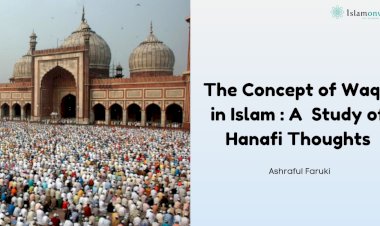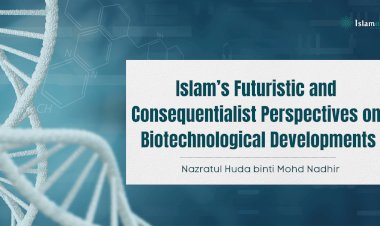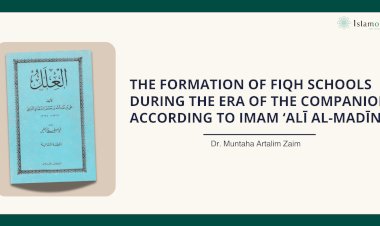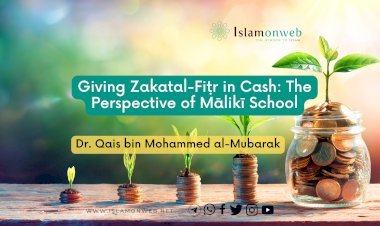Can Genetically Modified Food Be Permissible in Islam?
Introduction
Food is one of the basic things we need as a human. The use of Genetic Modified Organism (GMO) food is popular among people. However, some countries such as Nigeria, India and Yemen have crises and fewer sources of food facing food poverty and hunger. According to the World Bank, the global poverty line is from $1.90 to $2.15 per day in 2022. However, in 2023 About 9.2% of the world's population, or approximately 719 million people, are living on a daily income of less than $2.15.[1] Thus, this category was facing the problem to have a high income to support their life, especially buying food as a life necessity. So, hunger is a major issue in our times also. To decrease this issue in this area, we need to use biotechnology to produce more food and help needy people. Basically, according to World Health Organization (WHO), GMO is biological entities (plants, animals, or microorganisms) that have had their genetic material (DNA) altered in a way that does not happen normally through mating and/or natural recombination, which is known as genetically modified organisms (GMOs).[2] The term "modern biotechnology" or "gene technology" is frequently used, along with other terms like "recombinant DNA technology" or "genetic engineering". It enables the transfer of specific genes from one organism to another, as well as between unrelated species. GM foods are frequently referred to as foods created with or using GM organisms.[3] In addition to providing a more effective alternative to synthetic food, biotechnology also advances traditional plant breeding techniques. It offers an interesting and environmentally responsible solution to satisfy consumer demand for sustainable agriculture when combined with other advanced agricultural technology. More Green Revolutions might materialise as the advantages of GM crops that are realised by small and marginal farmers.[4]
How does GMO Food fight hunger?
It has been suggested that Golden Rice (GR), which has been genetically altered to synthesise beta-carotene in the grain, could be used as a treatment for vitamin A deficiency (VAD). In many poor nations, VAD is a significant public health issue since it affects 7 million pregnant women and 140 million pre-schoolers globally.[5] Up to 3 million of these kids pass away each year. In addition to raising child mortality, VAD raises the risk of infectious infections and can cause visual issues, including blindness. The deficiency is most prevalent in low-income homes, where staple foods with little nutritional value make up a large portion of the diet. Programmes for industrial fortification and food augmentation can reduce VAD, however, they frequently do not reach the target people in rural regions. The condition in rice-eating populations is expected to improve with the widespread adoption of Golden Rice. However, since this technology has not yet hit the market, actual results can only be only anticipated in the future. Golden rice is to be commercialized in Asian nations. Philippines is one country in Asia that will lead this project and the first country in this world will give the final biosafety approval to Golden Rice.[6] However, Golden rice is safe to eat because of a lot of positive results of research on this food. Based on a report by the National Academies of Science, Engineering and Medicine in May 2016, confirms the safety of GM crops and was based on over 20 years' worth of evidence from approximately 900 studies and publications on GMOs. In addition, GM foods shall be subject to rigorous safety checks and must not show a high risk of endangering human health before they are placed on the market. The consumption of GM foods has not been demonstrated to have a scientifically confirmed adverse effect on humans' health in the countries where they are authorised.[7]
GMO Food and SDG
The implementation of GMO food helps poor people to meet their needs in life. As humans, helping each other is a good thing. From the perspective of Sustainable Development Goals (SDG), there are two goals that can be achieved which are (1) no poverty and (2) no hunger when using GMO food.[8] Firstly, no poverty means that GMOs can give an opportunity to the workers in the poor. For example, for a lot of poor people in India, when using GMO food in their area, a lot of job opportunities can help them from the economic sector. When they produce golden rice that can help them market this product to other countries. In addition, no hunger is one of the SDG targets. The production of food from GMOs can help them and give them good nutrition and enough food to eat. For example, golden rice gives them a lot of nutrients. The problem related to their malnutrition can be decreased by having this food. Thus, this can help them to achieve no hunger.[9]

Islamic Perspective on GMO Food for poor people
Fuqaha’ say it's not okay to make copies of humans, but they're okay with using science to make better plants and animals for the benefit of humans. In 1997, a group of Islamic scholars under the supervision of the Islamic Fiqh Academy in Jeddah said it is permissible to use science to make better plants and animals as long as it doesn't hurt anyone and follows religious rules.[10] A religious leader from Egypt named Nasr Farid Wasil said that it's okay to do things that help people, like finding cures for diseases or giving people more water to drink. In addition, according to Dr. Lakhdar Khaleefi and Dr. Maajidah Khaleefi, in the article titled Genetic Modification: Justifications, Benefits and its Impact on the Environment and Society, stated that a researcher cannot declare that eating genetically engineered crops and fruits is haram (prohibited) until it is demonstrated beyond doubt that they are harmful. This does not mean that we can be negligent about this issue. This is because, as already mentioned, they may pose a risk in several ways, and because people continue to choose natural plants and crops, even if they are more costly. More research and time are needed to determine the impacts of these plants and the harm they may cause. Until it is proven that these plants are dangerous, the primary idea is that they are legal, and it is permissible to cultivate them.[11] Thus, it allowed to use this technology to produce halal food and help poor people.
However, according to fatwa Jabatan Agama Kemajuan Islam Malaysia (JAKIM) stated that the 95th Fatwa Committee Meeting of the National Council for Malaysian Islamic Religious Affairs which convened on 16-18 June 2011 discussed the ruling on eating Genetically Modified Food. Muzakarah has made the following decision which are: Firstly, after listening to the briefing and explanation from Y. Bhg. Prof. Dato' Dr. Yaakob Che Man, Director of the Halal Product Research Institute (IPPH) of Universiti Putra Malaysia and examining the arguments and views presented, Muzakarah noted that genetically modified food involves the transfer of halal and non-halal genes, from animals and plants to provide desired characteristics as food or medicine. In this regard, Muzakarah is of the view that Islam requires its people to choose good food (toyyib) that is halal, pure and does not harm the human soul and mind and the production process also does not harm humans and the environment. Accordingly, Muzakarah agreed to decide that the production of Genetically Modified Food (GM Food) was prohibited if using substances that are harmful to humans and the environment. While the use of halal farm animals is allowed if the animals are slaughtered according to the shari'ah method.[12]
Conclusion
To conclude that, GMO food uses and develops around the world and its focus is said to develop good food o gain profit and help the poor. In the SDG we also want to achieve no hunger and no poverty, so the production of GMO food can generate a good income, provide job opportunities, and improve the economy of a country. It can also help reduce the issue of hunger among poor people. From an Islamic point of view, it allows us to help people in need because it is a virtuous practice. Production of technology is allowed if it does not conflict with Islam. However, the production of this food must be halal and safe to eat. If it causes harm to someone then we should not eat it. Therefore, the production of GMO food must be safe and halal.
Endnotes
[1] Peer, Andrea. “Global Poverty: Facts, Faqs, and How to Help.” World Vision, April 5, 2023. https://www.worldvision.org/sponsorship-news-stories/global-poverty-facts#:~:text=2022%3A%20The%20World%20Bank%20updated,income%20of%20less%20than%20%242.15.
[2] Food, Genetically Modified.” World Health Organization. Accessed May 9, 2023. https://www.who.int/news-room/questions-and-answers/item/food-genetically-modified.
[3]“Food, Genetically Modified.” World Health Organization. Accessed May 9, 2023. https://www.who.int/news-room/questions-and-answers/item/food-genetically-modified.
[4] “Biotechnology – a Solution to Hunger?” United Nations. Accessed May 9, 2023. https://www.un.org/en/chronicle/article/biotechnology-solution-hunger.
[5] Matin Qaim, Benefits of genetically modified crops for the poor: Household income, nutrition, and health., November 2010, https://www.researchgate.net/publication/45274403_Benefits_of_genetically_modified_crops_for_the_poor_Household_income_nutrition_and_health, 552
[6] Neo, Pearly. “Philippines Golden Rice Price Pledge: GM Variant to Boost Vitamin A Levels Will Be Commercially ‘competitive’ by 2023.” foodnavigator, August 16, 2021. https://www.foodnavigator-asia.com/Article/2021/08/16/Philippines-Golden-Rice-price-pledge-GM-variant-to-boost-vitamin-A-levels-will-be-commercially-competitive-by-2023.
[7] “Golden Rice Faqs.” International Rice Research Institute, August 16, 2022. https://www.irri.org/golden-rice-faqs#:~:text=Golden%20Rice%20is%20developed%20through,improved%20the%20grain’s%20nutritive%20value. .
[8] “Goal 1: End Poverty in All Its Forms Everywhere - SDG Indicators.” United Nations. Accessed May 9, 2023. https://unstats.un.org/sdgs/report/2016/goal-01/.
[9] Qaim, Matin. Benefits of genetically modified crops for the poor: Household income, nutrition, and health., November 2010. https://www.researchgate.net/publication/45274403_Benefits_of_genetically_modified_crops_for_the_poor_Household_income_nutrition_and_health , page 555.
[10] Anke Iman Bouzenita, Islamic Legal Perspective on Genetically Modified Food. The American Journal of Islamic Social Sciences 27:1. https://www.ajis.org/index.php/ajiss/article/download/354/2106/4836, page 3-4.
[11] “Ruling on Eating Meat and Plants That Have Been Genetically Modified - Islam Question & Answer.” RSS. Accessed June 3, 2023. https://islamqa.info/en/answers/119830/ruling-on-eating-meat-and-plants-that-have-been-genetically-modified.
[12] “Hukum Memakan Makanan Terubahsuai Genetik (Genetic Modified Food).” E. Accessed June 3, 2023. http://e-smaf.islam.gov.my/e-smaf/index.php/main/mainv1/fatwa/pr/10278.
References
Anke Iman Bouzenita, Islamic Legal Perspective on Genetically Modified Food. The American Journal of Islamic Social Sciences 27:1. https://www.ajis.org/index.php/ajiss/article/download/354/2106/4836, page 3-4.
“Goal 1: End Poverty in All Its Forms Everywhere - SDG Indicators.” United Nations. Accessed May 9, 2023. https://unstats.un.org/sdgs/report/2016/goal-01/.
“Food, Genetically Modified.” World Health Organization. Accessed May 9, 2023. https://www.who.int/news-room/questions-and-answers/item/food-genetically-modified.
“Biotechnology – a Solution to Hunger?” United Nations. Accessed May 9, 2023. https://www.un.org/en/chronicle/article/biotechnology-solution-hunger.
“Jakim : E-SMAF V1.” E. Accessed May 14, 2023. http://e-smaf.islam.gov.my/e-smaf/index.php/main/mainv1/fatwa/pr/10278.
Neo, Pearly. “Philippines Golden Rice Price Pledge: GM Variant to Boost Vitamin A Levels Will Be Commercially ‘competitive’ by 2023.” foodnavigator, August 16, 2021. https://www.foodnavigator-asia.com/Article/2021/08/16/Philippines-Golden-Rice-price-pledge-GM-variant-to-boost-vitamin-A-levels-will-be-commercially-competitive-by-2023.
Peer, Andrea. “Global Poverty: Facts, Faqs, and How to Help.” World Vision, April 5, 2023. https://www.worldvision.org/sponsorship-news-stories/global-poverty-facts#:~:text=2022%3A%20The%20World%20Bank%20updated,income%20of%20less%20than%20%242.15.
Qaim, Matin. Benefits of genetically modified crops for the poor: Household income, nutrition, and health., November 2010. https://www.researchgate.net/publication/45274403_Benefits_of_genetically_modified_crops_for_the_poor_Household_income_nutrition_and_health.
Tariqur Rahman, Mohammad. Production and consumption of genetically modified food: An Islamic perspective, 2013. https://journals.iium.edu.my/revival/index.php/revival/article/download/82/70/296.
“Ruling on Eating Meat and Plants That Have Been Genetically Modified - Islam Question & Answer.” RSS. Accessed June 3, 2023. https://islamqa.info/en/answers/119830/ruling-on-eating-meat-and-plants-that-have-been-genetically-modified.
Disclaimer
The views expressed in this article are the author’s own and do not necessarily mirror Islamonweb’s editorial stance.
























Leave A Comment